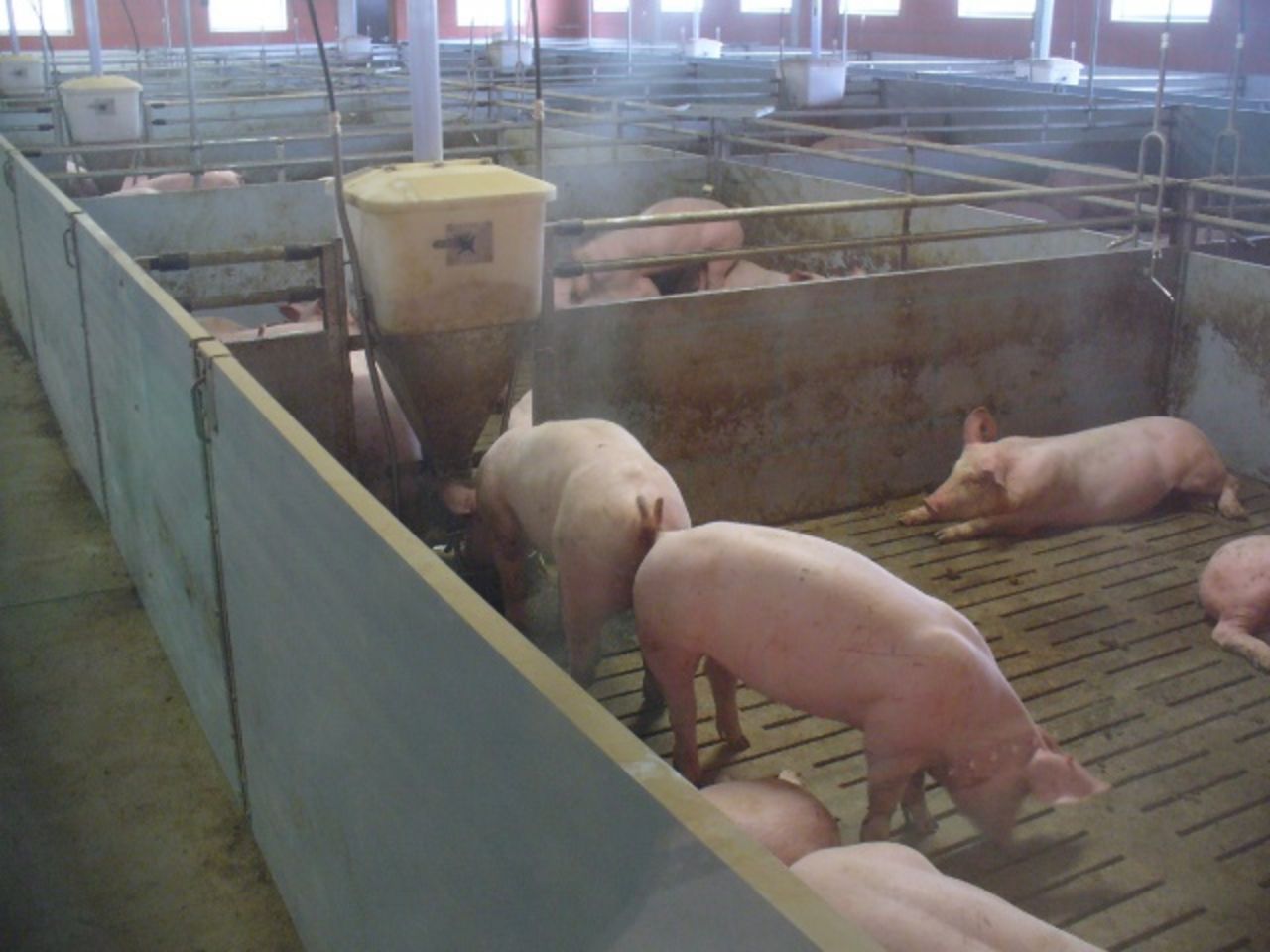Project
Recirculation air scrubbing of inside stable air

Internal elimination of ammonia and aerosols from the air in buildings for livestock using a Moving Bed Biofilm Reactor (MBBR)
With 95 % the agriculture is the main polluter of ammonia emissions in Germany. A considerable portion of these emission is released from animal livestock. Emissions should be reduced and animal welfare improved as well by using the recirculation air scrubbing within the animal keeping.
Background and Objective
As one of the relevant air pollutants ammonia contributes to acidification and nutrient accumulation processes in surface and ground waters. Ammonia is also a precursor chemical for the nitrous oxide production which is a relevant greenhouse gas. Above that ammonia affects the animal health within keepings by mucous membrane irritations an affections of the respiratory tract. Germany heavily exceeds the Europe-wide concerted emission ceilings for ammonia. Therefore the ammonia emission needs to be reduced significantly. Aim of the project is the developing of a process for ammonia and aerosol separation in the animal keeping using an inside located recirculation air scrubber. With the moving bed bio film reactor (MBBR) washed-out pollutants should be degraded. Aerosols as forage compounds should be oxidized in the bio film reactor to carbon dioxide, heat and water, while ammonia should be oxidized in the MBBR reactor to nitrate and transferred to atmospheric nitrogen if applicable.
Target Group
Livestock owners, pig farmers
Agriculture organizations, livestock stakeholders, organizations of chart Chambers
Agriculture industry (process engineering, plastic material production)
Research and educational institutions
Approach
On the basis of practical data generated from pig keepings (trace gas concentrations, volume flows, temperature and humidity) a prototype consisting of an inside circulation scrubber and MBBR bio reactor is planned. After that the technical equipment and the process control will be defined. Construction and installation of the prototype will then be realized in a pig fattening stable. After this a scrubber performance test will be made in view of ammonia and aerosol separation at different volume flows and operation conditions. During the performance test of the MBBR bio reactor the nitrification rate at different aeration intensities and the production of reaction products are matter of particular interest. Required structural and procedural improvements will be implemented within the test phases. In further project steps it will be investigated how the process affects the indoor air quality and animal health. In addition operation costs and process stability should be assessed.
Our Research Questions
Is it possible to reduce ammonia and aerosol concentrations permanent in the inside stable air by using the MBBR bio reactor?
Which separation efficiencies can be secured with the system and how much volume of processing water accumulates?
To what extent the washing water from the bio reactor can be recycled for the ammonia separation in the scrubber unit?
Results
In the EliAAS project (Elimination of Ammonia and Aerosols from Stable Air), tests were carried out in the period from February 2020 - August 2021 to improve the quality of stable air. The process consisted of the exhaust air scrubber, nitrification unit and denitrification unit components. Due to a disease outbreak at the experimental station and the restrictions imposed by the corona pandemic, the focus of the work was on studies of the conversion of nitrogen in nitrification and denitrification.
The initially planned continuous operation of the plant failed because, when denitrification was not running optimally, methanol dosed as a C source entered the nitrification unit and inhibited nitrification there. For this reason, a discontinuous mode of operation was selected, in which nitrification and denitrification were separated in the period from 08:00 to 16:00. During this period, the C source in the denitrification unit was then to be degraded as completely as possible.
The nitrogen balances carried out showed only a comparatively low production of secondary trace gases. In relation to the N input, these averaged 0.25 ± 0.32 % for nitrification and 0.07 ± 0.07 % for denitrification. Essentially, N2O losses occurred.
The average oxidation performance in nitrification was 24.4 ± 8.8 g NOX-N/day, while the denitrification performance was 33.9 ± 9.4 g NOX-N/day. Due to a number of process-related problems, plant operation was prone to failure and required intensive plant support. While at a dosage of 60 g N/day the nitrification could not ensure sufficient oxidation and was therefore overloaded, at 30 g N/day a good process efficiency was achieved with an oxidation rate of 80.8 %. In contrast, at a dosage of only 15 g N/day, the potential of the plant was not fully utilized.
A high level of supervision was required to maintain stable plant operation.
Due to the animal physiological requirements in the barn, the process can only be operated as partial air purification (heat and moisture removal). Based on a purification of e.g. 25 % of the stable air, the calculations showed that approx. 2.0 - 2.4 kg/fattening place and year are required for the pH buffering with sodium hydrogen carbonate. The methanol consumption is 1.2 - 3.6 kg/fattening place and year and the required blowdown rate of contaminated water is 37.6 - 91.3 liters/fattening place and year.
Thünen-Contact

Involved Thünen-Partners
Involved external Thünen-Partners
-
Spranger Kunststoffe GmbH
(Plauen, Deutschland) -
Institut für Binnenfischerei e.V. Potsdam-Sacrow
(Potsdam, Deutschland)
Funding Body
-
Landwirtschaftliche Rentenbank
(national, privat)
Duration
9.2018 - 8.2021
More Information
Project funding number: 100362952
Project status:
finished

![[Translate to English:] [Translate to English:]](/media/_processed_/3/6/csm_Hintergrund-Ausschnitt1_9daaef6b89.jpeg)
![[Translate to English:] [Translate to English:]](/media/_processed_/3/6/csm_Hintergrund-Ausschnitt1_0bd7111163.jpeg)
![[Translate to English:] Logo des Bundesministerium für Ernährung und Landwirtschaft](/media/allgemein/logos/BMEL_Logo.svg)